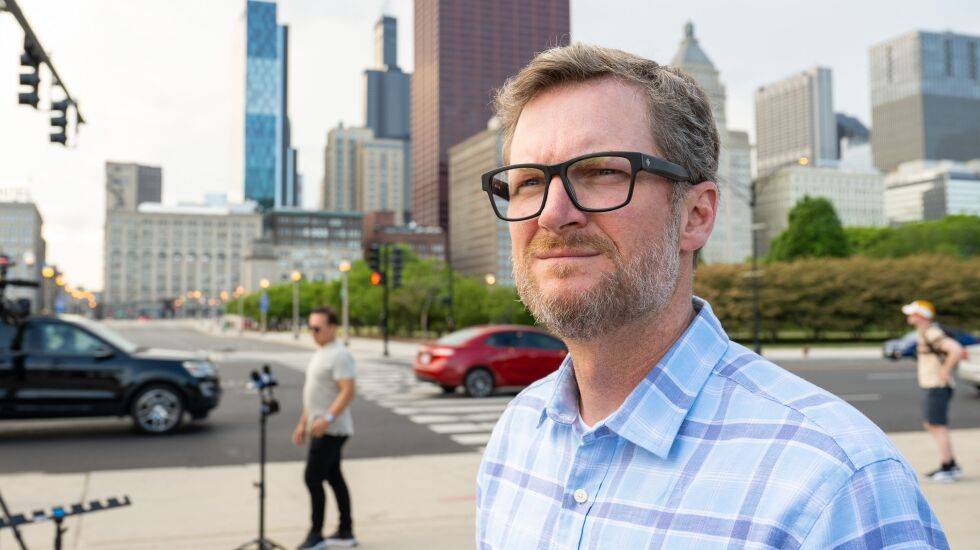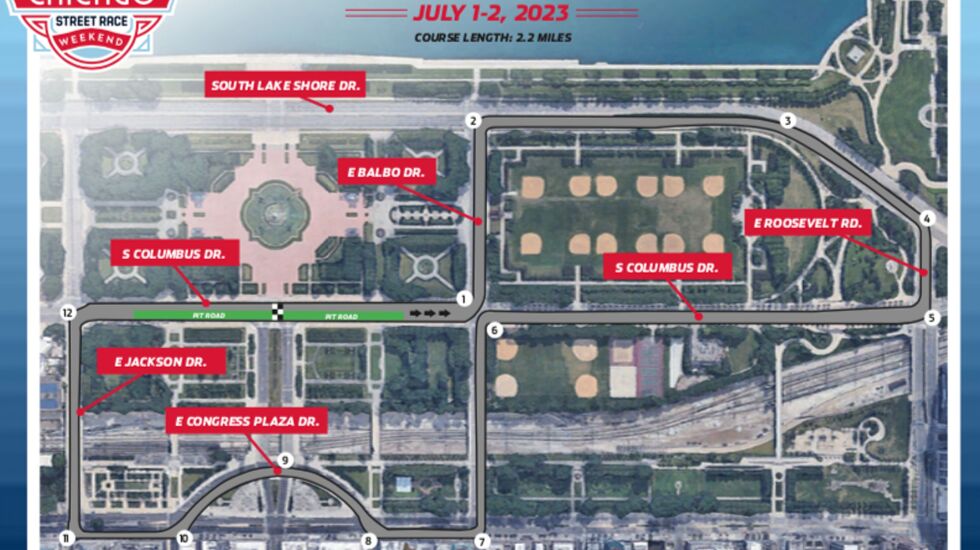
When NASCAR drivers rev their engines at the starting line near Buckingham Fountain in July for the Chicago Street Race, they’ll be embarking on one of the strangest races in the franchise’s history.
Gone is the traditional oval track with banked turns.
Instead, drivers will have to navigate Chicago’s streets just as regular drivers do, taking into account bumps, crests and other imperfections in the 12-turn, 2.2-mile course that winds through and around Grant Park.
“Cracks and imperfections. We call that character in a racetrack,” said Dale Earnhardt Jr. “It challenges drivers because it shakes the car loose from the track.”
The two-time Daytona 500 champion stopped by Chicago Wednesday as other drivers offered ride-alongs on the track in an SUV.
Earnhardt won’t be driving in the race, set for July 1-2, but he assessed the challenges drivers will face in NASCAR’s first street race.
Earnhardt said he was surprised at how wide the track is at some points. The most interesting turn will be the half-circle that bends around Ida B. Wells Drive from Michigan Avenue, where drivers will navigate an elevation change.
“It’s going to shake their stomach a little bit,” Earnhardt said.

“They’re going to have to start braking into turn seven as the car crests this hill, and that’ll be a really unorthodox thing to do. The car is going to want to lock up the tires when they hit the brake pedal there. So that’ll be fun to watch them try to crest the hill, brake, slow down, turn right. All of those things at the same time.”
Although the track won’t offer the top speeds of a regular oval track, NASCAR driver A.J. Allmendinger expects the stock cars will reach around 150 mph along the stretch of DuSable Lake Shore Drive.
Allmendinger has been practicing the Chicago track on a simulator because drivers will have only 50 minutes before the race to test it out in person.

Allmendinger may be one of the only racers to have street racing experience.
“In these types of racetracks, there’s always challenges of how narrow certain sections get, how bumpy the racetrack can be,” he said.
“There’s definitely certain sections that are really wide, and then a couple of corners that are very narrow. And you can feel some of it’s repaved and some of it’s old city streets.”
Drivers will also have to watch for manhole covers, but they will only be a problem if it’s where drivers are braking, he said. And if it’s wet or raining, that’s a whole other issue with keeping traction, he said.
The stock cars will be adjusted for street racing. For oval tracks, cars are adjusted for making left turns only. But the Chicago course has a nearly equal amount of right turns as lefts, he said. Cars will be adjusted to handle bumps without scraping the pavement.
The race will attract around 100,000 people over its two days, by NASCAR’s own estimates. Last year, Mayor Lori Lightfoot said the city signed a three-year deal with NASCAR to hold yearly races downtown.
NASCAR is banking a lot on the race, investing about $50 million for this race alone. The Chicago race has spurred some controversy among fans who worry that a street race would move the franchise further from its roots.
“It’s a very big moment for NASCAR for many reasons,” Earnhardt said. “It’ll determine the future of racing for NASCAR in the city of Chicago. It’ll determine the future of NASCAR racing on our streets.
“Street racing has always kind of been a curiosity for everyone in the industry. So we’re going to check that box and understand exactly how that fits into our world,” he said.







